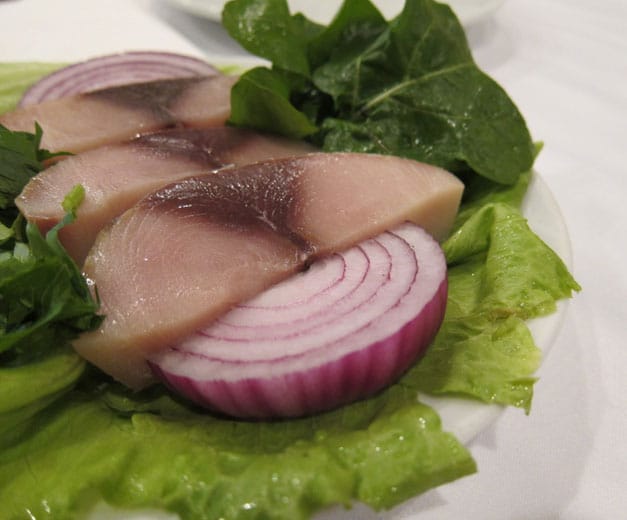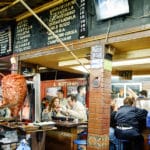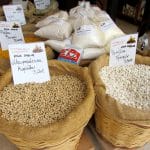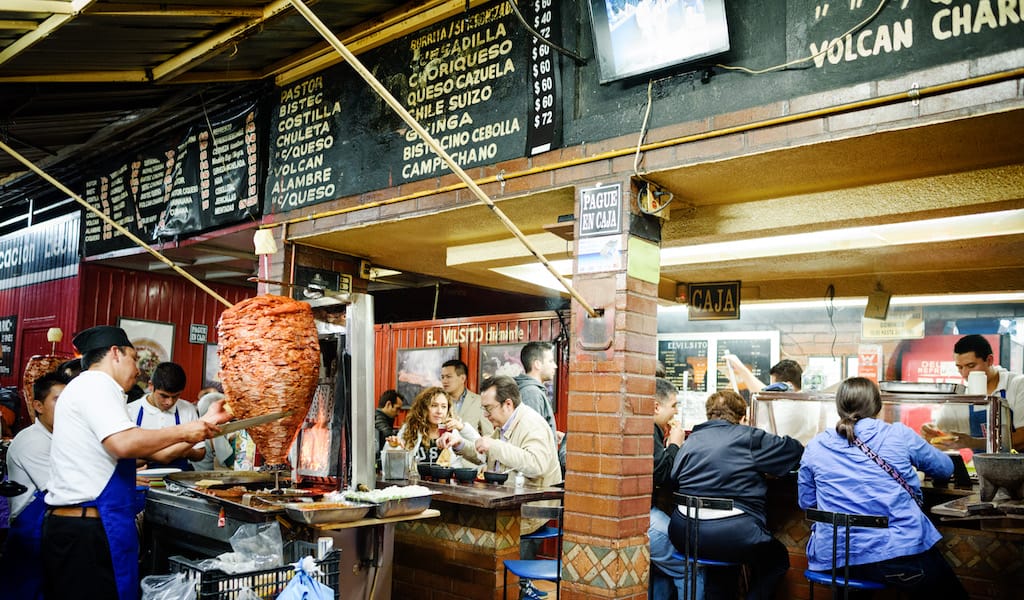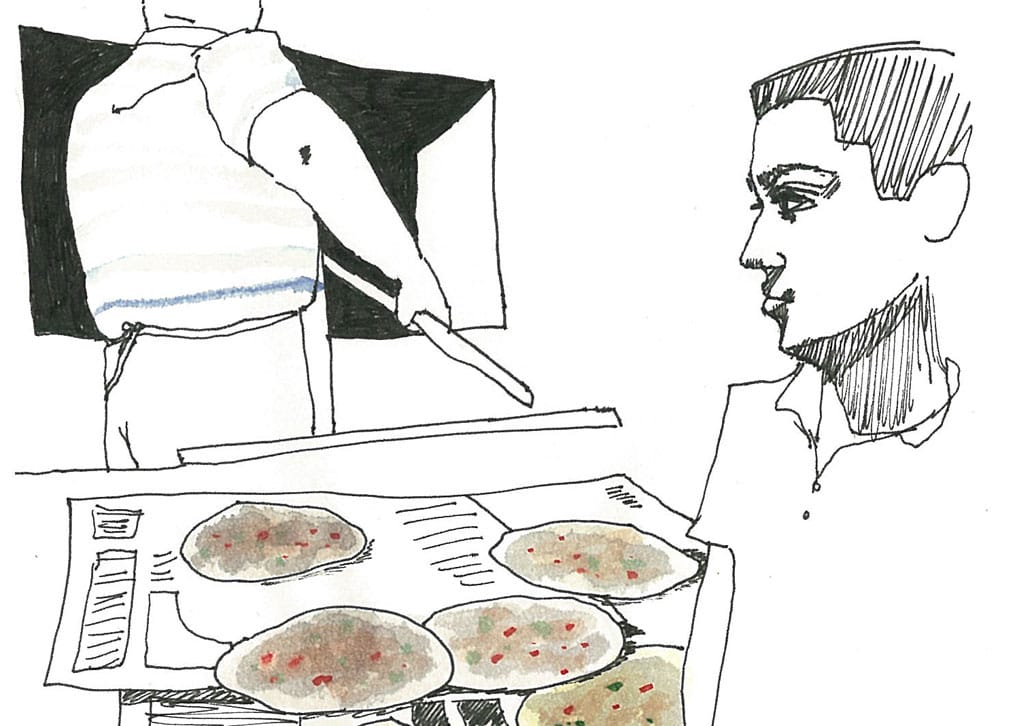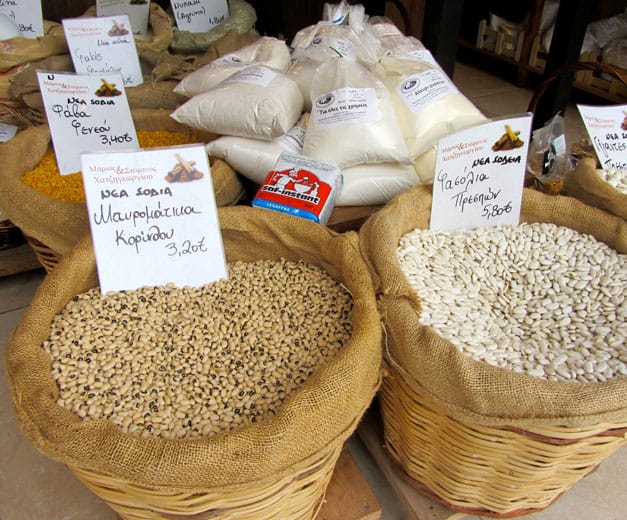The fatty torik – the Turkish name for a large, mature Atlantic bonito, similar to the little tunny – courses the straits of the Bosphorus and the Dardanelles for just a short period each year in November and December. Yet the people of Istanbul eat it year-round by preserving the fish in a light brine, something it seems they have been doing for millennia – the Byzantines even minted coins with an image of the fish. Making lakerda is more than a means to preserve bonito for the rest of the year, however; it’s part of the city’s culinary instinct.
Around 5 a.m. one recent morning in Yenikapı, yellow rubber boots were piled high in front of the one serene spot on the sprawling grounds of the Municipal Fish Auction. Inside the “Fisherman’s Mosque,” 70 or 80 men were saying their prayers after a long frenzy on the Bosphorus. These fishermen had brought in the winter’s first haul of torik – the season’s most valuable catch. As they sat whispering their prayers, the ecosystem of middlemen was churning with negotiations that would ensure the passage of these fish from the long hangar at the seafront into local fish markets and restaurants throughout the city. Outside the mosque, vans marked with the city’s top fish restaurants filed into the damp, dark parking lot, which was littered with Styrofoam fish coolers, and the place began to smell less like fish and more like money.
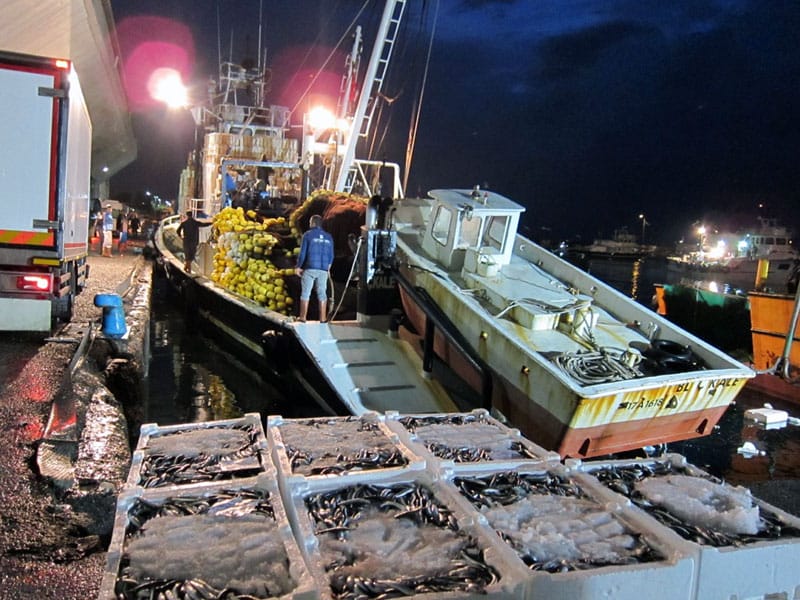
The fisherman, auctioneers, commissionmen, wholesalers, restaurant owners, trolley pushers and onlookers gathered here were giddy and unable to contain themselves as they piled around for the season’s first big torik auction. As boats offloaded their catch and wheeled it in, stacked in crates on dollies, the volume went up and the crowd surged toward the new arrivals. Great loads of hamsi, or Black Sea anchovies, came off a boat named Cengiz, the Turkish name for Genghis Khan. Then came a procession of torik packed two to a crate, their heads and tail fins protruding. Tea slingers coursed through the piles of fish, cigarettes were passed around, telephone calls were urgently placed. One man popped out from behind a stack of fish crates to surprise a vendor with a quick backhanded shot to the crotch followed by a howl, the squeak of rubber boots and friendly grappling.
“The best lakerda is made from Bosphorus torik,” Yusuf, a lakerda-maker in Beyoğlu’s fish market, told us later. The shop where he works, Reşat Balık, is a third-generation family business that has supplied traditional meyhanes around town with lakerda since the 1940s. Yusuf Bey cut the head and tail off, sliced the fish into thick medallions and ran a thin spike through the center, draining the blood before tossing it into a bucket of seawater. After cleaning it several times he would seal it in jars of salt for 10 days or so before distributing it to clients around the city.
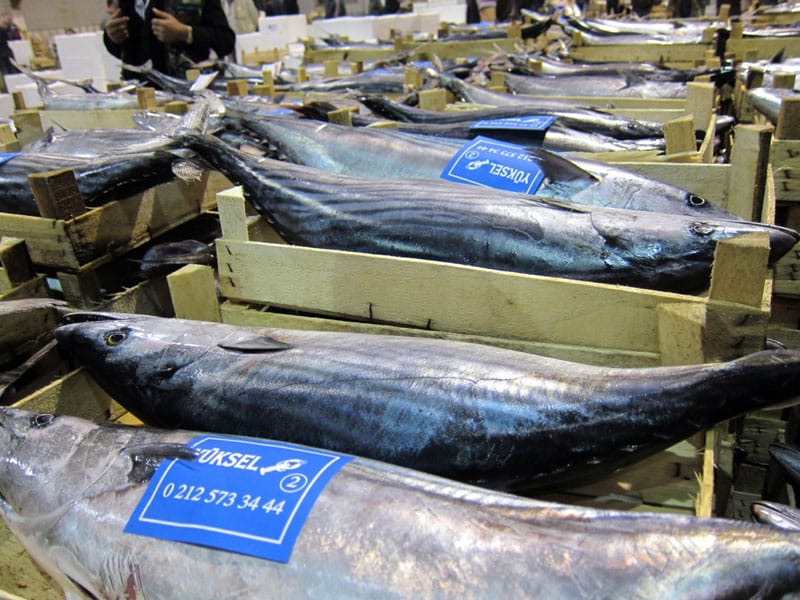
Following a suggestion from Yusuf Bey, we next found ourselves at Refik, a traditional meyhane in Asmalımescit that serves Yusuf’s own preparations. Served over slices of raw red onions, the lakerda medallions were a deep rose in color, soft and fragrant of the sea. We felt honored by the presence of this true Istanbul native alongside our small plates of soslu patlıcan (eggplant smothered in that New World import, the tomato), Arnavut ciğeri (“Albanian” liver, which probably arrived here with refugees of the Balkan Wars), and a spicy acılı ezme that tasted of Southeast Turkey.
We often fear that tastes change too quickly and that much in this city is lost to the latest trend. But then we find ourselves involved in something ancient and very much alive, like drinking water from a sacred spring or eating lakerda, and we are reassured that the soul of Istanbul is healthy and well, if a little salty and often hiding in unexpected places.
This article was originally published on January 4, 2013.
Published on February 10, 2015
Related stories
January 14, 2020
Mexico City | By Culinary Backstreets
Mexico CityAs the calendar year turns over, we’ve grown accustomed to the barrage of lists telling us where to travel during the next 12 months. Often these places are a country or even a whole region – you could spend an entire year exploring just one of the locations listed and still barely make a dent.…
Eat with the craftsmen of Istanbul’s Bazaar Quarter on our walk!
August 31, 2019
IstanbulWe are sure that many parallel universes exist within the labyrinthine Grand Bazaar of Istanbul, one of the world’s biggest and oldest covered markets. The easiest one to access is a world of Prada knock-offs, Minion keychains and leather-bound menus presented with “Please, monsieur, fresh fish, Turkish kebab, hola!” This is the world constructed for…
January 27, 2015
AthensIf there is one single food family that shows off the breadth and extent of the collective Greek culinary imagination, it has to be the humble legume. Together with wheat, beans of all kinds, along with lentils, chickpeas and split peas, form the very foundation of the Greek diet and have done so since Neolithic…







































